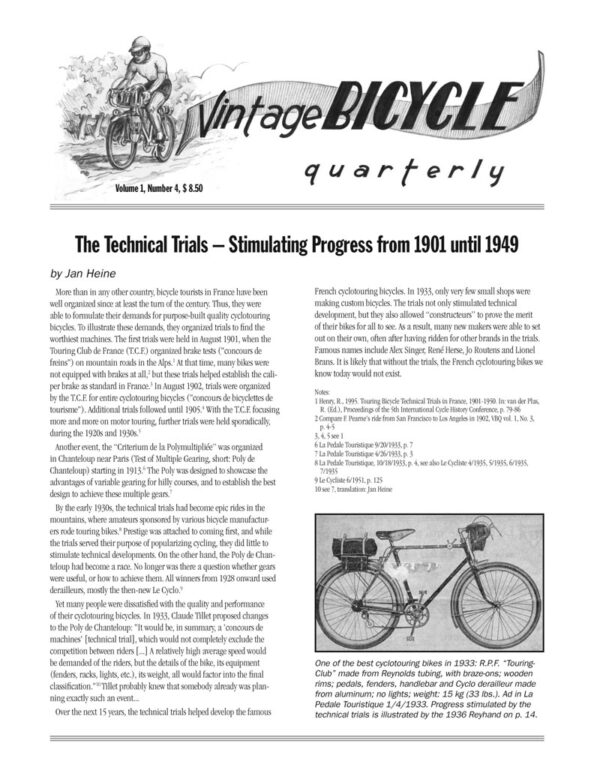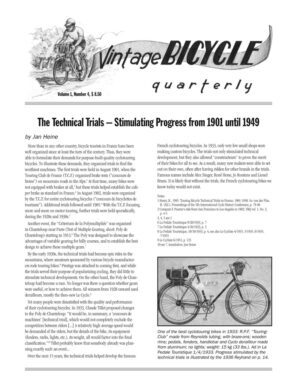

BQ 4 (Summer 2003)
$9.75
Vol. 1, No. 4
Technical Trials 1
The Technical Trials advanced bicycle technology more than perhaps anything else. In these events, bicycles, not riders, competed for the title of the best machine. The emphasis was on light weight, useful features and reliability. Bikes were weighed and judged against a set of criteria, and awarded points for their specifications. Then they were to be ridden for hundreds of kilometers over unpaved mountain roads, and points were deducted for any malfunction. The bike with the most points won.
Aluminum cranks, cantilever brakes, triple chainrings, cartridge bearings in bottom brackets and hubs and low-rider racks all proved their worth in the 1930s Technical Trials. In this issue, we recount the fascinating history of these events, with eyewitness reports from “pilots” and spectators alike, result sheets and period advertisements.
We also take you on a tour of the Alex Singer shop, and report on riding a 600 km brevet on a 1940s René Herse tandem.


